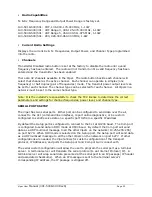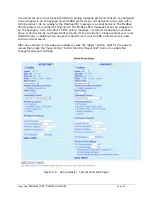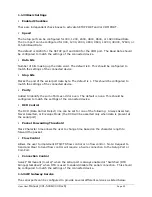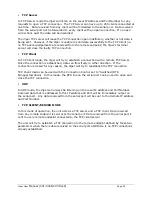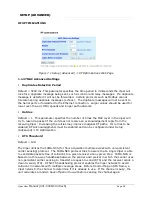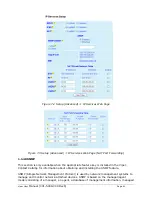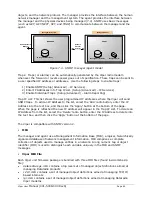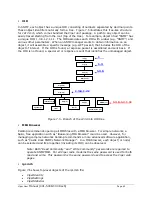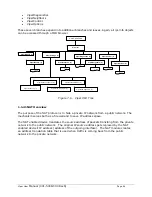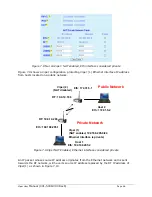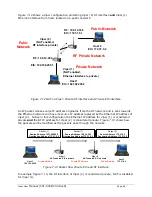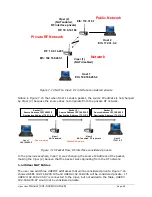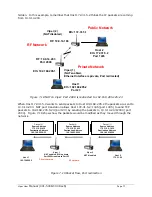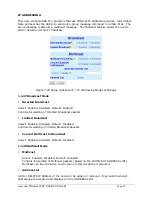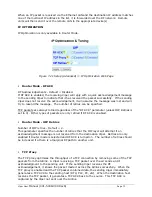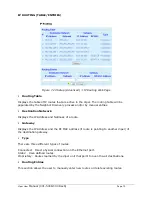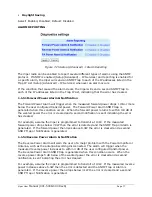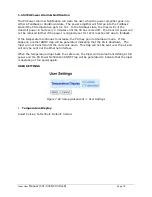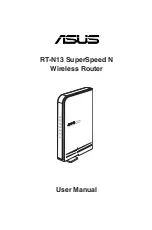
Viper User
Manual (001-5008-000 Rev6)
Page
63
OID
In SNMP, each object has a unique OID consisting of numbers separated by decimal points.
These object identifiers naturally form a tree. Figure 7.5 illustrates this tree-like structure
for
1213.mib,
which comes bundled the Viper unit package
.
A path to any object can be
easily traced starting from the root (top of the tree). For example, object titled “SNMP” has
a unique OID: 1.3.6.1.2.1.11. The MIB associates each OID with a label (e.g. “SNMP”) and
various other parameters. When an SNMP manager wants to obtain information on an
object, it will assemble a specific message (e.g. GET packet) that includes the OID of the
object of interest. If the OID is found, a response packet is assembled and sent back. If
the OID is not found, a special error response is sent that identifies the unmanaged object.
Figure 7.5 - Branch of the 1234.mib OID tree
MIB Browser
CalAmp recommends opening all MIB files with a MIB browser. For simple networks, a
basic, free application such as ”iReasoning MIB browser” could be used. However, for
managing complex networks CalAmp recommends a more advanced software application,
such as “Castle Rock SNMPc Network Manager”. In a MIB browser, each object (or node)
can be selected and its properties (including its OID) can be observed.
Note: Both “Read Community” and “Write Community” passwords are required to
operate SNMP MIB. For all Viper radio modems the same password is used for both
read and write. This password is the same password used to access the Viper web
pages.
ipr.mib
Figure 7.6 shows top-level objects of the ipr.mib file:
•
ViperIdentity
•
ViperSettings
•
ViperStatistics
org (3)
iso(1)
ip(4)
icmp(5)
SNMP (11)
udp(7)
system (1)
interfaces (2)
dod (6)
internet (1)
mgmt (2)
mib-2 (1)
tcp (6)
transmission (10)
1.3.6.1.2.1
1.3.6.1.2.1.11
1
1.3.6
1.3


